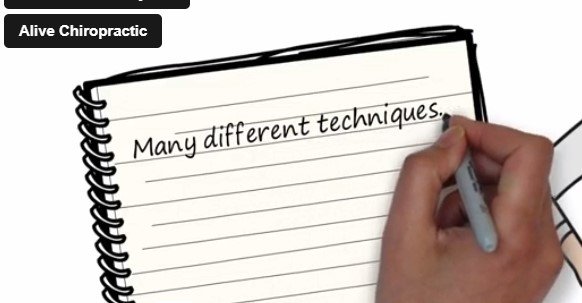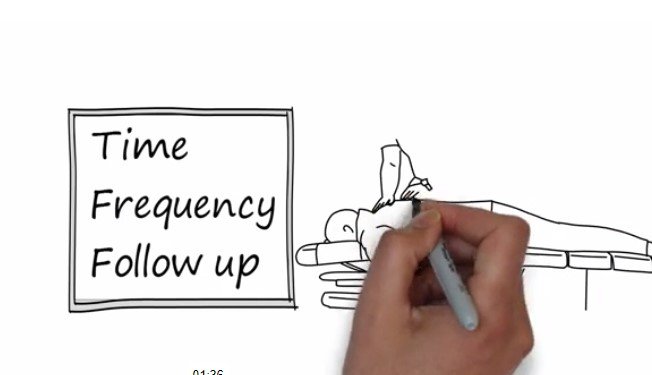Alive Blog
Movement
The essential ingredient (sadly missing nowadays)
In a sedentary world dominated by screens and desk jobs, physical movement has become more crucial than ever. Beyond the pursuit of fitness goals, regular physical activity holds the key to achieving and maintaining optimal health. In this blog post, we explore the undeniable significance of physical movement and its transformative impact on our overall well-being. From physical benefits to mental and emotional enhancements, incorporating movement into your daily routine can unlock a healthier, happier you.
Physical benefits of movement
Regular physical activity is the foundation of a healthy body. There is a myriad of physical benefits that movement provides, including improved cardiovascular health, increased muscle strength and endurance, enhanced flexibility, and weight management. Engaging in activities like walking, jogging, swimming, or participating in sports can positively impact your physical well-being. You do not have to be a professional athlete to enjoy the numerous benefits of movement.
Cardiovascular
Exercise positively influences cardiovascular health by challenging the heart and circulatory system. This challenge leads to adaptations such as an improved pumping efficiency of the heart, resulting in lower resting heart rates and reduced blood pressure. These adaptations collectively enhance the health of our cardiovascular system, reducing the risk of heart diseases. Movement is the most underrated and underprescribed medications in the world. It is also one of the most effective.
Weight loss and consequent joint health
Metabolism and weight management are also influenced by physical exercise. When we engage in physical activity, our energy expenditure increases. This aids in weight management by burning calories and maintaining a balance between energy intake and expenditure. Reducing body weight will have a positive impact on your spine, reducing the risk of developing lower back pain, sciatica and other spinal issues. Plus, less body weight means less pressure on delicate structures like your knees, ankles and hips. So less risk of developing osteoarthritis. Less weight = less pressure on your joints = less wear and tear. Travel light!
Flexibility and joint mobility are supported by regular movement. Exercise keeps joints lubricated, preventing stiffness and promoting joint health. Strengthening the muscles around joints through exercise provides stability, reducing the likelihood of injuries and joint-related discomfort.
Additionally, exercise enhances insulin sensitivity, helping regulate blood sugar levels and reducing the risk of developing type 2 diabetes.
Engaging in resistance exercises, such as weight lifting, promotes muscle growth and strength. These activities stimulate muscles, leading to increased muscle mass and improved overall muscular health. Moreover, weight-bearing exercises, like walking or jogging, stimulate bone remodeling, which contributes to higher bone density and a reduced risk of osteopenia and consequent fractures.
Hormones
Hormonal balance is another area influenced by physical exercise. Regular activity helps regulate hormone levels in the body, contributing to better hormonal equilibrium. This can lead to improved reproductive health, menstrual regularity, and reduced symptoms of hormonal imbalances such as depression or anxiety.
Last but not least, exercise supports the immune system by enhancing circulation and promoting the movement of immune cells throughout the body. This boost in immune function aids in the body’s defense against infections and illnesses.

Mental and emotional well-being
Physical movement does more than just sculpt our bodies—it also nourishes our minds and emotions.
Engaging in daily physical exercise extends its influence beyond the realm of the physical, reaching deep into the spheres of mental and emotional well-being. This harmonious relationship between movement and psychological equilibrium is a testament to the intricate connection between our bodies and our minds.
Stress
Regular exercise plays a significant role in stress reduction and mood enhancement. As you engage in physical activity, your body responds by releasing endorphins, often referred to as the “feel-good” hormones. Endorphins have been shown to also cover an important role in pain perception: sometimes they have been referred to as “the brain’s natural pain reliever” (full article here).
The act of moving your body is a potent way to alleviate the pressures and tensions of daily life, fostering a feeling of calm and emotional balance.
Furthermore, physical exercise can be seen as a form of mindfulness in motion. It provides an opportunity to redirect your attention away from distressing thoughts and focus on the present moment. This meditative aspect of exercise offers an effective tool for managing anxiety, as your awareness becomes absorbed in the physical sensations of movement rather than the complexities of your thoughts.
Self esteem and confidence
Consistent engagement in exercise can also yield transformative effects on self-esteem and confidence. Witnessing your body’s progress and achievements cultivates a more positive relationship with yourself. The improvements in body image and physical fitness contribute to an enhanced sense of self-worth, empowering you to face challenges with greater confidence.
The cognitive benefits of exercise extend to enhanced cognitive function and mental clarity. Regular physical activity stimulates increased blood flow to the brain, which in turn sharpens your memory, focus, and problem-solving abilities. This cognitive boost translates into a greater sense of mental sharpness, allowing you to navigate daily tasks with efficiency.
The interplay between the body and the mind is further accentuated by the mind-body connection that daily physical exercise fosters. As you move your body, you become attuned to bodily sensations and movements. This heightened awareness nurtures a stronger connection to your physical self, promoting a deeper sense of embodiment.
Moreover, exercise serves as an outlet for emotional release. It provides a constructive channel through which you can channel pent-up emotions and tensions. Engaging in physical activity becomes a healthy means of managing and releasing emotional stress, offering an alternative to less constructive coping mechanisms.
Physical activity also promotes relaxation and contributes to better sleep quality. The exertion of effort during the day often leads to a deeper sense of relaxation in the evening, facilitating a more restful sleep cycle.

Preventing chronic health Conditions
Engaging in regular physical activity can significantly reduce the risk of chronic health conditions. Everyday at our clinic in Poundbury, we discuss with our clients how movement helps prevent and manage conditions like heart disease, diabetes, obesity, and certain types of cancer. Learn here about the positive effects of exercise on regulating blood pressure, cholesterol levels, and blood sugar, and the impact it has on maintaining a healthy immune system.
Enhancing bone and joint health and longevity
As mentioned above, movement plays a crucial role in maintaining strong bones and joints throughout our lives. Low-impact exercises and weight-bearing activities contribute to joint health, reducing the risk of conditions like arthritis and promoting longevity. I always encourage my clients to find an activity that is also fun and mentally stimulating (e.g. squash, tennis, a walk in nature, etc) so that exercising does not actually become a duty but a pleasure. I also recommend variety: if you repeat the same activity over and over, you are going to stress the very same structures over and over, increasing the risk of injury. Having a varied routine means increasing longevity of your body.
Incorporating movement into daily life
Finding ways to incorporate movement into our daily routines is essential for long-term success. We provide practical tips on integrating physical activity into your lifestyle, whether you have a busy schedule or limited access to fitness facilities. Explore creative ideas like taking active breaks, engaging in household chores, or exploring outdoor activities to make movement an enjoyable and sustainable part of your life.
Physical movement is not a luxury but a necessity for optimal health. By embracing an active lifestyle, we open the door to a multitude of physical, mental, and emotional benefits. Whether through structured exercise routines, recreational activities, or simple changes in our daily habits, every movement counts. Start small, find activities you enjoy, and gradually increase your physical activity to unlock the transformative power of movement. Embrace the joy of an active life and embark on a journey towards a healthier and more fulfilling existence today.
Be happier
This is in my opinion the most important factor. At the end of the day, it all boils down to this: physical exercise makes you happier. Movement has been widely recognized as a powerful tool to improve mood and overall well-being. There are several reasons why engaging in regular physical activity can make people happier:
The main one, is again endorphin release: during exercise, the body releases chemicals called endorphins. These are neurotransmitters that act as natural painkillers and mood enhancers. They interact with the brain’s receptors to reduce stress and produce feelings of euphoria, often referred to as a “runner’s high.” This natural boost in mood can contribute to an overall sense of happiness.
Then, stress reduction: exercise is a great way to relieve stress. Physical activity helps the body to reduce levels of stress hormones like cortisol and adrenaline. It also encourages the release of serotonin, a neurotransmitter that plays a crucial role in regulating mood and promoting feelings of well-being. Our mood gets lifted also becasue through exercise, we get improved sleep: regular physical activity can help improve the quality of sleep. Better sleep is linked to better mood and mental clarity during the day, leading to increased happiness and a sense of overall well-being.
Other aspects include enhanced self-esteem and body image: Exercise can help individuals feel more confident and satisfied with their bodies. Achieving fitness goals or simply engaging in regular physical activity can lead to a positive body image, which can positively impact self-esteem and happiness.
Last but not least, social interactions: Many forms of exercise, such as team sports, group classes, or exercising with friends, provide opportunities for social interactions and a sense of belonging. Social connections are vital for human happiness and can lead to increased feelings of joy and well-being. Engaging in physical exercise can also serve as a distraction from daily worries and negative thoughts. It allows individuals to focus on the present moment and gives the mind a chance to relax and rejuvenate.
Brain health and cognitive benefits
Regular exercise has been associated with improved cognitive function and reduced risk of cognitive decline with aging. A sharper mind and better memory can contribute to an overall sense of happiness and well-being. Setting and achieving fitness goals, whether it’s running a certain distance, lifting a specific weight, or improving flexibility, can create a sense of accomplishment and satisfaction. This sense of achievement can positively impact mood and happiness.
Physical exercise also promotes neuroplasticity, the brain’s ability to reorganize and form new neural connections. This can lead to improved mental resilience and emotional regulation, making individuals more capable of dealing with stress and negative emotions.
It’s important to note that the effects of exercise on happiness can vary from person to person, and individual preferences for the type and intensity of exercise can also play a role. However, incorporating regular physical activity into one’s routine can significantly contribute to a happier and healthier life.
Dr. Edoardo Elisei DC
Alive Chiropractic LTD
alivechiropractic.co.uk
1C Crown Gate Square
POUNDBURY
04/07/2023
A collection of informative and engaging videos that offer visual insights into the world of chiropractic care. Visual content is a powerful tool for education and empowerment, allowing you to deepen your understanding of chiropractic principles, techniques, and the benefits of maintaining a healthy spine.

Chiropractic techniques
Chronic lower back pain is one of the most common musculoskeletal conditions causing disability and absence from work worldwide.

What is pain?
Sometimes, neck pain can be accompanied by radiating pain towards the shoulder blade or – in some cases – towards the arms.

How often should I see my chiropractor?
If you suffer from frequent headaches or migraines, chiropractic care can provide effective relief.
